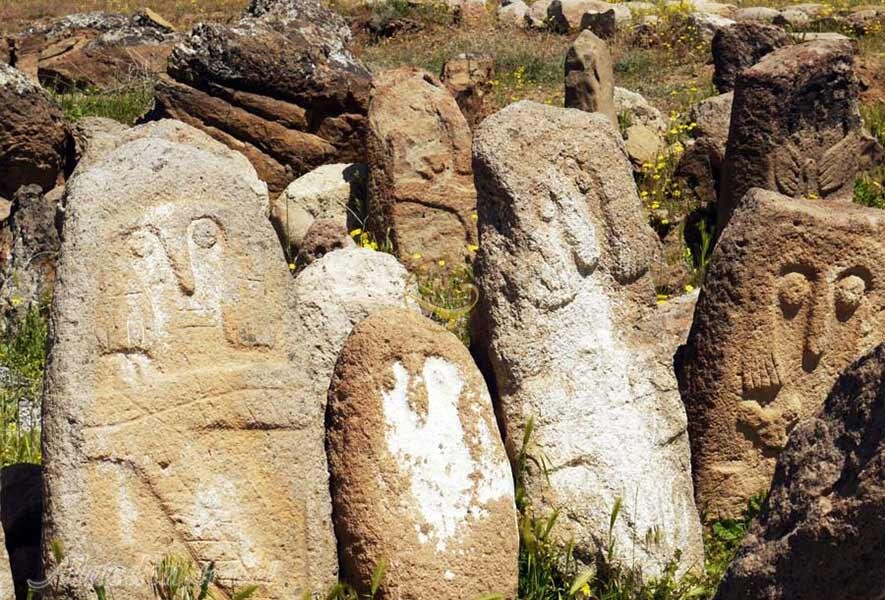Roofing covers to protect 'city of the mouthless'

TEHRAN – A series of custom-made roofing covers have been constructed over Shahr-e Yeri, a unique archaeological site in northwest Iran, which is sometimes referred to as the “city of the mouthless”.
The installation of shielding structures is part of an extensive project aimed to protect the 400-hectare archaeological site against harsh natural conditions, IRNA reported.
Shahr-e Yeri is one of the earliest settlements in the country, which is situated near Pirazman village of Meshkin Shahr in northwestern Ardebil province. The archaeological site was inscribed on the list of national heritage sites in 1931.
The site embraces an Iron-Age fortress, three prehistorical temples, and tens of stones on which bizarre-shaped mouthless faces have been carved. During its heyday bodies of the dead were buried with special ceremonies and rituals in compliance with religious beliefs… however, the majority of the tombs were found empty of skeletons due to illegal excavations, according to the Circle of Ancient Iranian Studies.

More than 10,000 ancient petroglyphs and rock-carved arts have been discovered in and near Meshkin Shahr over the past couple of years. Some of the objects bear depictions of human beings in archery, cavalry in rhythmic and magical themes. There are also petroglyphs depicting mountain goats, boat anchors, shooting and scenes of war, and scenes of deer hunting in individual and collective forms.
Rock arts can be seen around mountainous regions across Iran where roaming life and livestock farming are prevalent typically. The rock-carved figures of animals and associated tools are regarded as good clues to help shed light on daily life in the distant past, though some figures might be symbolic.
AFM
